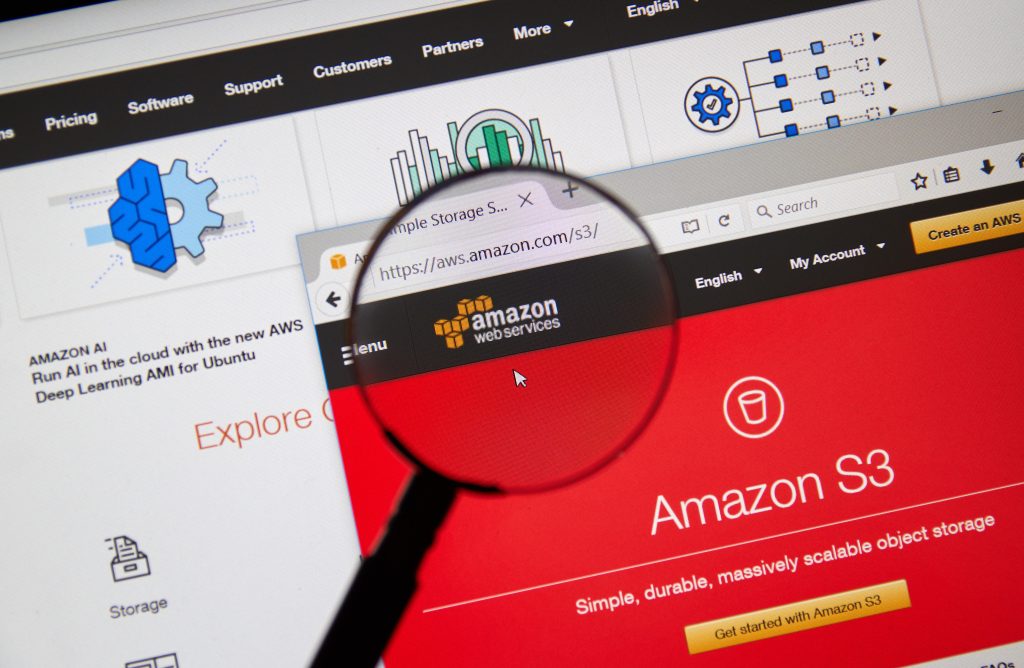In the early hours of Monday morning, vast corners of the internet suddenly went dark. Popular apps, essential banking services, gaming platforms, and even Amazon’s own websites began experiencing slowdowns and outages. The culprit was not a cyberattack nor a massive power failure, but a technical hiccup deep inside Amazon Web Services (AWS), the cloud infrastructure that powers a significant portion of the modern internet.
What unfolded over the course of just a few hours demonstrated how fragile the digital ecosystem can be when so much depends on a handful of centralized cloud providers. A single DNS issue in one AWS region had a domino effect that briefly crippled some of the world’s most widely used services.

Early Morning Disruption
The outage began just after midnight Pacific Time on October 20. Amazon’s service status page flagged “increased error rates and latencies for multiple AWS services in the US-EAST-1 region,” a critical hub for Amazon’s cloud infrastructure located in Northern Virginia. This region hosts a vast number of data centers and is considered a backbone for many companies’ online operations in both the U.S. and Europe.
Within minutes, reports started flooding in from users across the globe. Downdetector, a site that tracks service interruptions, recorded over 6.5 million outage reports throughout the event. About 1.4 million reports originated from the United States, 800,000 came from the United Kingdom, and the remainder were spread across Europe, Asia, and Australia.
Amazon’s engineers quickly identified the root cause as a DNS (Domain Name System) resolution issue affecting the DynamoDB API endpoint in the US-EAST-1 region. DynamoDB is Amazon’s highly scalable, low-latency database service—essentially a lightning-fast digital filing cabinet that apps rely on to store and retrieve data in real time. If that cabinet suddenly becomes inaccessible, any service depending on it can grind to a halt.
A Wide-Ranging Impact
The scale of the disruption was remarkable. Because AWS underpins thousands of companies’ backend infrastructure, the DNS issue cascaded outward, taking down or impairing critical services in multiple industries.
- Social Media & Messaging Platforms like Snapchat, Reddit, Slack, Signal, and even some parts of WhatsApp experienced interruptions. Users were unable to send messages, load timelines, or log in.
- Gaming & Entertainment Services were hit just as hard. Popular titles such as Fortnite, Roblox, Clash of Clans, and Pokémon GO were affected, as were streaming giants like Disney+, Hulu, Apple TV, and Amazon’s own Prime Video. PlayStation Network users also reported difficulties connecting.
- E-Commerce and Amazon Services faced internal disruptions. Amazon.com experienced slowdowns, Alexa-powered devices failed to process commands, Ring doorbells temporarily went offline, and Amazon Music streams were interrupted.
- Financial Institutions and Trading Platforms were not spared. Coinbase, Robinhood, Venmo, Lloyds Bank, Halifax, and Bank of Scotland all experienced outages or reduced functionality. For users relying on these services to transfer funds or make trades, the outage was more than an inconvenience—it was a real disruption to financial activity.
- Other essential services such as Duolingo, Canva, Lyft, Delta and United Airlines’ booking systems, the UK’s HMRC tax website, Zoom, Starbucks’ app, and even McDonald’s mobile ordering system were affected. Over 1,000 companies in total reported issues, according to Downdetector.
AWS Responds
By 2:00 a.m. PT, AWS engineers had isolated the issue to the DNS resolution for DynamoDB. Within half an hour, they began rolling out mitigations, and signs of recovery started appearing. At 3:35 a.m. PT, AWS reported that “the underlying DNS issue has been fully mitigated, and most AWS Service operations are succeeding normally now.”
While many services bounced back quickly, some experienced lingering slowdowns and functionality glitches as systems gradually stabilized. Reddit, for example, remained offline until around 4:30 a.m. PT.
Amazon did not issue a lengthy public statement beyond its service status updates, pointing journalists and customers back to its health dashboard. Experts suggest that Amazon will likely conduct a detailed post-mortem to determine exactly how a DNS misconfiguration or failure managed to ripple out on such a massive scale.
Understanding the DNS Problem
DNS, or the Domain Name System, is often described as the internet’s phonebook. It translates human-readable web addresses (like example.com) into machine-readable IP addresses that computers use to find and communicate with one another. When DNS resolution fails, users can’t connect to the correct servers—even if those servers are functioning perfectly.
Typically, DNS errors are small, isolated incidents affecting one website or service. What made this outage unusual was its scale. Because AWS hosts and routes traffic for such a huge share of the internet, a DNS failure within AWS infrastructure can disrupt not just one or two sites, but hundreds or even thousands at once.
Not a Cyberattack
Given the widespread impact, some observers speculated about the possibility of a cyberattack. AWS quickly clarified that the outage was not the result of any malicious activity. It was an internal operational issue—a technical misconfiguration or failure that temporarily disrupted DNS resolution.
Security experts noted, however, that such incidents can create openings for malicious actors. During outages, phishing scams and opportunistic attacks often spike as users receive fraudulent “password reset” emails or other attempts to exploit confusion. Cybersecurity professionals advised users to remain vigilant for suspicious messages in the hours and days following the disruption.
A Fragile, Centralized Internet
This incident highlights a growing concern: the centralization of internet infrastructure. AWS, along with a handful of other companies like Google Cloud and Microsoft Azure, provide the backbone for much of the world’s digital services. While this centralization offers efficiency and scalability, it also concentrates risk.
“This kind of outage, where a foundational internet service brings down a large swathe of online services, only happens a handful of times in a year,” said Daniel Ramirez, director of product at Downdetector by Ookla. “They are becoming slightly more frequent as companies are encouraged to completely rely on cloud services.”
Luke Kehoe, an industry analyst at Ookla, emphasized the importance of architectural resilience. “Many organizations still concentrate critical workloads in a single cloud region,” he explained. “Distributing critical apps and data across multiple regions and availability zones can materially reduce the blast radius of future incidents.”
Lessons Learned
While Monday’s outage lasted roughly three and a half hours, its impact was outsized. It showed how a single DNS issue in one AWS region could ripple through banking, communication, entertainment, and commerce worldwide.
For consumers, the incident was a reminder of just how invisible yet indispensable cloud infrastructure has become. For companies, it underscored the need for robust failover strategies and geographic redundancy. And for Amazon, it highlighted the critical responsibility that comes with being the internet’s backbone.
As services returned to normal, the digital world carried on—but the outage left an unmistakable warning: when one piece of the web’s foundation shakes, the entire structure can wobble.



